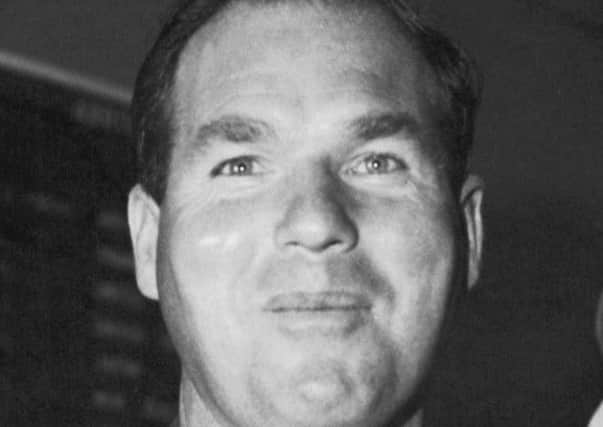Obituary: Kelvin David George Nagle, golfer


At the time of his death, Australian golfer Kel Nagle was the oldest living major winner, having etched his name in the annals of golf history by winning the Centenary Open at St Andrews in 1960. Then aged 39, with a decent playing record but no pedigree in majors, he was a rank outsider.
The red hot favourite was Arnold Palmer, America’s golfing sensation, who had already won the Masters and the US Open that year and had a hat trick in his sights. His very presence doubled gate receipts from the previous year.
Advertisement
Hide AdAdvertisement
Hide AdThe key point was in the final round, on the 17th green, the Road Hole, where Nagle faced up to a ten-foot putt for par, knowing Palmer had just notched a birdie on the 18th to reduce his lead to one stroke.
Calmly, he sank the putt, later describing it as “the best of my life”. A par at the 18th clinched his win by one stroke. In addition to the trophy and a replica, he won a cheque for £1,250, a gold medal and a gold money clip in which a watch was set, inscribed “Centenary British Open Winner.”
When inducted into the World Golf Hall of Fame in 2007, Nagle recalled his 1960 success: “It was a fantastic thrill really. I didn’t give myself much chance. It opened lots of doors and I got invites to play all over the world.”
Although best remembered for that one major success, Nagle enjoyed a wonderful career, winning more than 80 tournaments worldwide. Among the highlights were wins at the French and Swiss Opens in 1961; he finished second in the Open at Troon in 1962 and tied for fourth at Muirfield in 1966.
In 1965 he tied for the US Open with Gary Player at Bellerive, Missouri but lost to him in the 18-hole playoff after being badly unnerved when he struck a spectator on the 5th hole.
He won multiple championships in Australia and New Zealand as well as the World Seniors in 1971 and 1975; and underlining his affinity with Scottish links courses, he won the British Seniors at Elie in 1973. Between 1949 and 1975, he won a minimum of one tournament each year.
Nagle was born in Sydney and his family moved when he was eight to Dorrigo, 350 miles north, to operate a dairy farm. It was there he first played a form of rudimentary golf, the previous farm occupant having left some golf balls and home-made clubs.
But it was on his return to Sydney aged 15 that he began to play properly when he started caddying and helping out at the pro’s shop at Pymble Golf Club. A career in carpentry was soon discarded when he became assistant pro at the club but then war intervened.
Advertisement
Hide AdAdvertisement
Hide AdHe was called up and initially served in an anti-tank regiment at Darwin and then, after completing jungle training, saw service in New Guinea.
After the war, he resumed his club job but also began playing in tournaments, his first notable success being the Australian PGA in 1949. At this stage he was a big swinging big hitter, known as the “Pymble Crusher” – he once drove the 350 yards 1st hole at Royal Canberra – but needed more consistency to achieve regular success.
A trip to the United States in the early 1950s led to his reducing his swing to increase accuracy in his shot-making. At the same time he improved his short game tremendously, aided by the acquisition of a Bullnose putter which he played with for the rest of his career. Sam Snead once said: “If I had Kel Nagle’s putting stroke, nobody would ever have beaten me.”
When he retired, Nagle donated his putter to the British Golf Museum at St Andrews. With his game so remodelled, Nagle had the platform for his success in the decades that followed.
Nagle was revered as much for his personal qualities as his golfing ability. He was a true gent, extremely likeable and self-effacing to the point of being nicknamed “Mr Modesty”.
Gary Player said: “I can honestly say I never met anybody in my life that didn’t really like Kel.” Bruce Devlin, a fellow Australian golfer, referred to him as “a prince among men” and thought so highly of him he named one of his sons after him.
Jack Newton, another Ausralian golfer who tied for the Open at Carnoustie in 1975 but lost the playoff to Tom Watson, said: “A finer gent than Kel I never knew. He was a non-drinker whose favourite ‘tipple’ was a cup of tea.”
And his close friend Peter Thomson, with whom he twice won the Canada Cup for Australia, now the World Cup, said of him: “Of all the people I have met in the world of golf, this fellow is the finest.”
Advertisement
Hide AdAdvertisement
Hide AdLatterly Nagle lived in Terrey Hills Nursing Home in North Sydney in accommodation named “Dormie Corner”. Outside hung a painting of the Old Course depicting the iconic R&A Clubhouse, the Swilcan Bridge and the 18th hole, a reminder of his greatest days.
His wife predeceased him some years ago and he is survived by his four sons and numerous grandchildren.